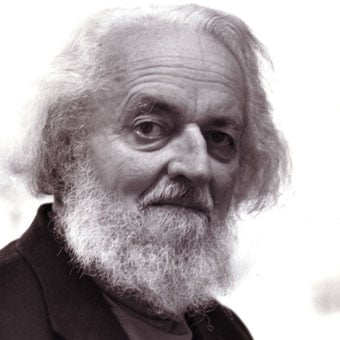
Gottfried von Einem
An introduction to Einem’s music by Harald Kunz
A Declaration of Belief in Tradition
Now that modern music has aged, the Avant-garde is history, and Post Modernism established, it is no longer considered a crime to declare one’s belief in traditions, to carry them forward and develop them further.
Gottfried von Einem, who had the reputation of being too modern in his youth, was certainly no conservative, backward-looking traditionalist in later life. In his oeuvre, he unquestionably had his finger on the pulse of the times. For the performers of his works and his audience alike, his music was contemporary and alive. Yet Gottfried von Einem’s music was never modern in the sense of being modish – he did not embrace short-lived fashions but rather followed his craftsman’s skill and well-informed creative powers that were imbued with his extraordinary personality. With a solid traditional foundation, the unique personal quality in von Einem’s music appears as a refreshing contrast to the familiar; as a surprise impetus for a new auditory experience.
Gottfried von Einem believed that it is only possible to experience the unexpected as new when it is presented against the background of music which seems familiar to a listener. If exclusively new elements are employed, this leads to a dulling of receptiveness to what is new and may even result in boredom. And to be boring – according to Gottfried von Einem – is the greatest sin an artist can commit. All his life, Gottfried von Einem knew how to avoid and avert this transgression.
A closer analysis of his scores, which are principally based on expanded tonalities, reveals chromatic, atonal, pentatonic, and dodecaphonic forms. The composer deploys these as stylistic devices wherever and whenever he deems it necessary or desirable. Von Einem treats rhythm in a similarly unorthodox way. Time and again he interrupts regularity with polyrhythmic aberrations or subverts the expected course of things by throwing in obstructions. These are expressions of the composer’s temperament and of his dramatic character. Indeed the most striking characteristic of Gottfried von Einem’s music is its dramatic quality. This is what makes his operas and ballets, his cantatas and orchestral works a sure success with the public. Yet in contrast to the sforzati of his dramatic gestures, Gottfried von Einem also enchants his audience with the tender lyricism of the vocal and instrumental parts of the operas, in the slow movements of the orchestral works, in the lieder, and in the chamber works.
Merriment and grief, turmoil and renunciation – such ambivalence reflects the richness of Gottfried von Einem’s spirit, which found its expression in an oeuvre that encompasses all genres.
Harald Kunz, 1998
